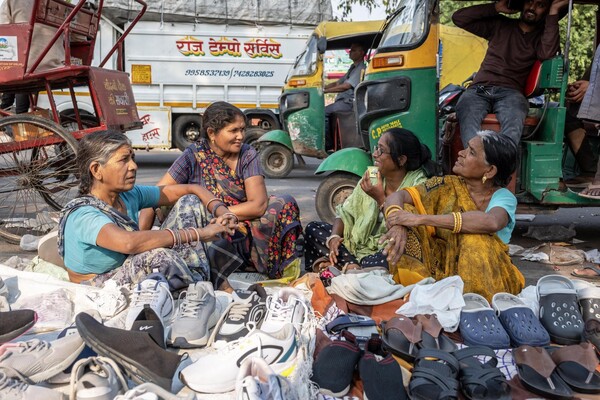
Griffin Pitt, right, works with two other student researchers to test the conductivity, total dissolved solids, salinity, and temperature of water below a sand dam in Kenya.
(Image: Courtesy of Griffin Pitt)

What makes India India? That question was central to India, Culture, and Society, a course offered this fall taught by doctoral candidate Akhil P. Veetil. Students looked at a range of materials and practices considered to be definitively Indian to consider how national and cultural identities coalesce. The course, cross-listed in South Asian studies along with the departments of history and religion, took students from ancient India through the present day, examining religion, multilingual heritage, caste system, and diaspora through film, literature, podcasts, documentaries, and political analysis.
Studying India over time allows the class to focus on the way ideas change, says Veetil, a fifth-year interdisciplinary doctoral candidate in the departments of South Asia studies and comparative literature and literary theory. “While some of the students in the course had a personal connection to India, others were curious about a country that has such a large population, has so much diversity, and has interesting ways of looking at issues that exist in other parts of the world,” he says.
For their final projects, students gave preliminary presentations on their work before finishing their papers, which looked at a wide range of topics and time periods from the Indo-Greek kingdom beginning in 200 BCE to health care disparities in contemporary Dalit women.
Rhea Bakshi, a fourth-year student from Potomac, Maryland majoring in biology, focused on health care disparities among Dalit women in India. In a presentation to the class, Bakshi said, “The Dalits make up 17% of India’s population and, despite the legal abolishment of their ‘untouchable’ status, Dalits continue to experience unfavorable health outcomes, with women living an average of only 59 years.” She notes that ongoing health care disparities continue to be perpetuated by “the interplay between gender, socioeconomic status, education, cultural stigma, and inefficient health care systems.”
Sahil Mehta, a second-year student in the Wharton School and the College of Arts and Sciences from Toronto, studied the Indo-Greek kingdom, which formed during the splintering of Alexander the Great’s empire after his death. Mehta became fascinated by this kingdom, which was located in the Indian subcontinent, yet remained culturally Greek for centuries following Alexander’s death.
Without supply lines and infrastructure to support foreign rulers, Mehta wondered how the Indo-Greeks were able to rule without being subsumed into a native community. He theorized that the outsiders “were able to establish and maintain power through intentional cultural syncretism,” Mehta said during his presentation on the topic, “which is the blending of aspects of Hellenistic Greek and North Indian cultures to adapt.”
To examine this blending, Mehta focused on material culture: currency, Buddhist texts, art, and architecture. Mehta showed the class slides of bilingual coins that used both Greek and Kharosthi, an ancient Indo-Iranian script that would have been familiar to local inhabitants. One coin read, “King Menander, follower of the dharma,” a reference to a ruler who converted to Buddhism, which may have endeared him to the populace, Mehta said.
India, Culture, and Society was one of many classes Bakshi has taken in South Asian studies, and she says she “learned an incredible amount both from Akhil and my fellow classmates.” Bakshi says, “The class fostered a very inclusive environment where I felt comfortable to contribute to discussions.”
Kristina Linnea García

Griffin Pitt, right, works with two other student researchers to test the conductivity, total dissolved solids, salinity, and temperature of water below a sand dam in Kenya.
(Image: Courtesy of Griffin Pitt)

Image: Andriy Onufriyenko via Getty Images

Four women street vendors sell shoes and footwear on a Delhi street.
(Image: Kannagi Khanna)

nocred